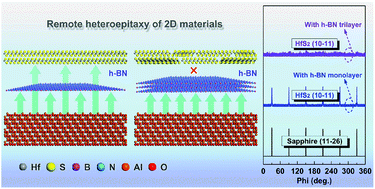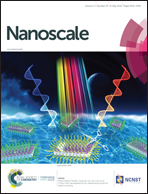Remote heteroepitaxy of atomic layered hafnium disulfide on sapphire through hexagonal boron nitride†
Abstract
Two-dimensional (2D) heterostructures have attracted a great deal of attention due to their novel phenomena arising from the complementary properties of their constituent materials, and provide an ideal platform for exploring new fundamental research and realizing technological innovation. Here, for the first time, we report the formation of high quality HfS2/h-BN heterostructures by the remote heteroepitaxy technique, in which the large-area single-crystal HfS2 layers were epitaxially grown on c-plane sapphire through a polycrystalline h-BN layer via chemical vapor deposition. It is found that c-sapphire substrates can penetrate monolayer and bilayer h-BN to remotely handle the epitaxial growth of HfS2. Benefitting from the high crystal quality of HfS2 epilayers and the weak interface scattering of HfS2 on h-BN, the HfS2 photodetectors demonstrate excellent performance with a high on/off ratio exceeding 105, an excellent photoresponsivity up to 0.135 A W−1 and a high detectivity of over 1012 Jones. Furthermore, the HfS2/h-BN heterostructures prepared by the remote epitaxy can be rapidly released and transferred to a substrate of interest, which opens a new pathway for large-area advanced wearable electronics applications.



 Please wait while we load your content...
Please wait while we load your content...